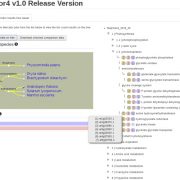
MapMan4: A refined protein classification and annotation framework applicable to multi-omics data analysis (Mol Plant)
Plant Science Research WeeklyRevolutions in omics technologies have rapidly increased the number of plant genomes, transcriptomes and proteomes available. However, protein sequences need to be assigned a biological function to provide useful insights for comparative genomics and transcriptomics. Here, Schwacke et al present MapMan4,…

Transport protein particles contribute to endosomal organization and function (Plant Cell)
Plant Science Research WeeklyTransport protein particles (TRAPPs) are multisubunit complexes that regulate intracellular trafficking, but haven’t yet been well characterized in plant cells. The authors previously identified AtTRAPPC11 as an abundant protein in the SYP61 vesicle proteome, with homology to mammalian TRAPPC11. Here,…
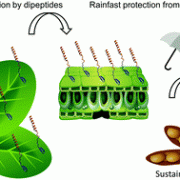
A bifunctional dipeptide functionalizes crop surfaces for sustainable pest management (Green Chemistry)
Plant Science Research WeeklyMost synthetic pesticides do not stick well on plants especially during raining season and can be washed off during irrigation shorty after application. Therefore, the farmer may need to apply several times or hope for dry days to spray. Swinges et al. developed a synthetic peptide with two separate…
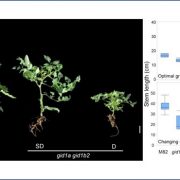
Gene redundancy: is it also redundant in the "real world"?
Research, The Plant Cell, The Plant Cell: In a NutshellIllouz-Eliaz et al. report that GA receptor genes that appear redundant under controlled climate conditions have unique roles under field conditions. Plant Cell https://doi.org/10.1105/tpc.19.00235
By Natanella Illouz-Eliaz, Uria Ramon, Hagai Shohat, Shula Blum, Sivan Livne, Dvir Mendelson and David…
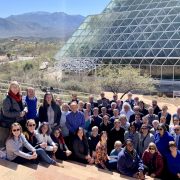
Unite, Inspire, Enable: The future of plant science
Blog, Plant Science Research NetworkAuthors: JP Dundore-Arias, Jacque Fletcher, and Brett Tyler
This article originally appeared in Phytopathology News (May 2019, Volume 53, Issue 5)
“The goal of a sustainable future, with a more nimble and innovative workforce and a highly competitive research enterprise, is in the national interest….…
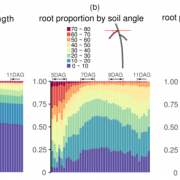
Unearthing Root Growth Dynamics Through 3-D Time-lapse Imaging
Research, The Plant Cell, The Plant Cell: In BriefPlants blindly probe the soil for ever-changing pockets of water and nutrients and continuously adjust their root system architecture (RSA) accordingly. Whether they invest more energy in growing existing roots or sending out new lateral roots depends on both genetic programs and environmental factors.…

Plant Calcium Channels Perceive the Hungry Caterpillar
Research, The Plant Cell: In a NutshellMeena et al. identify a Ca2+ channel involved in herbivory recognition.
Plant Cell https://doi.org/10.1105/tpc.19.00057
By Mukesh Kumar Meena, Ramgopal Prajapati, Deepthi Krishna and Jyothilakshmi Vadassery are from National Institute of Plant Genome Research (NIPGR), New Delhi, India
Background:…
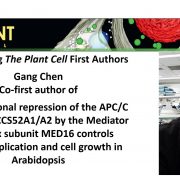
Recognizing Plant Cell first authors: Gang Chen
The Plant Cell, The Plant Cell: Author ProfilesGang Chen, co-first author of Transcriptional repression of the APC/C activators CCS52A1/A2 by the Mediator complex subunit MED16 controls endoreduplication and cell growth in Arabidopsis
Current Position: Lecturer, College of Life Sciences and Resource Environment, Yichun University, China
Education:…
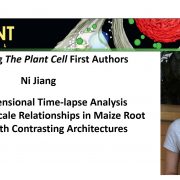
Recognizing Plant Cell first authors: Ni Jiang
The Plant Cell, The Plant Cell: Author ProfilesNi Jiang, first author of Three-dimensional Time-lapse Analysis Reveals Multiscale Relationships in Maize Root Systems with Contrasting Architectures
Current Position: Senior Computational Scientist, Topp Laboratory, Donald Danforth Plant Science Center
Education: Ph.D. in Biomedical Engineering,…

